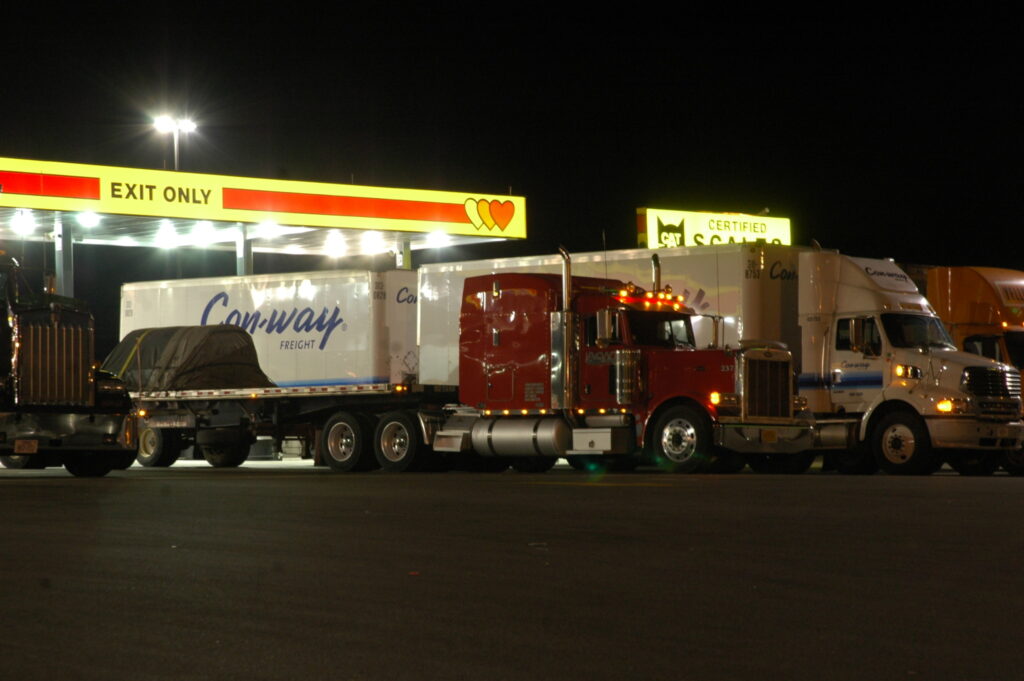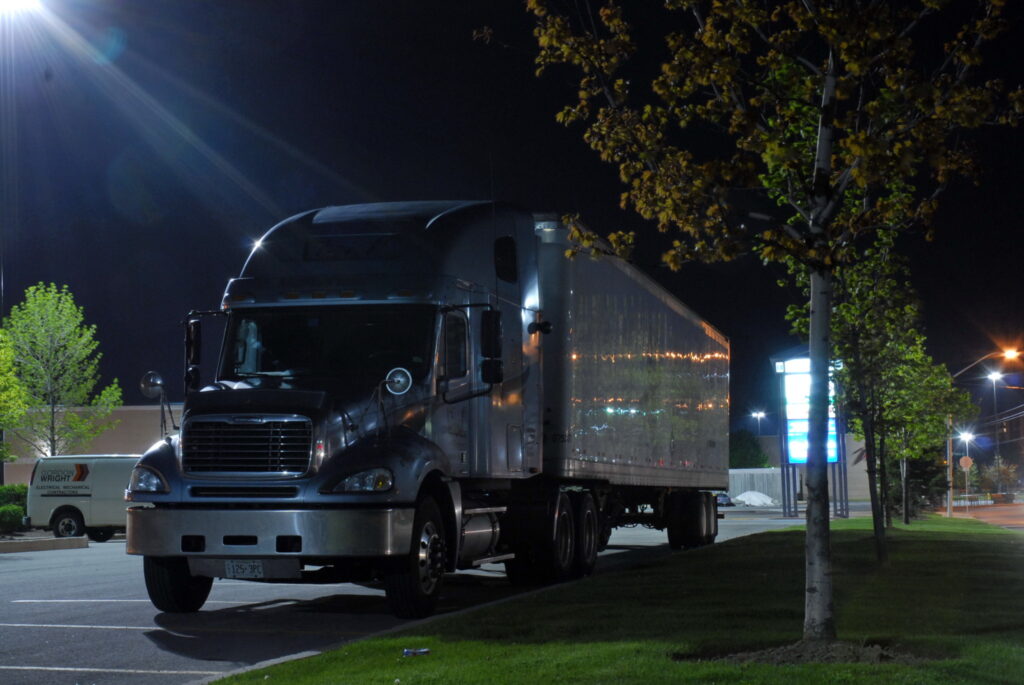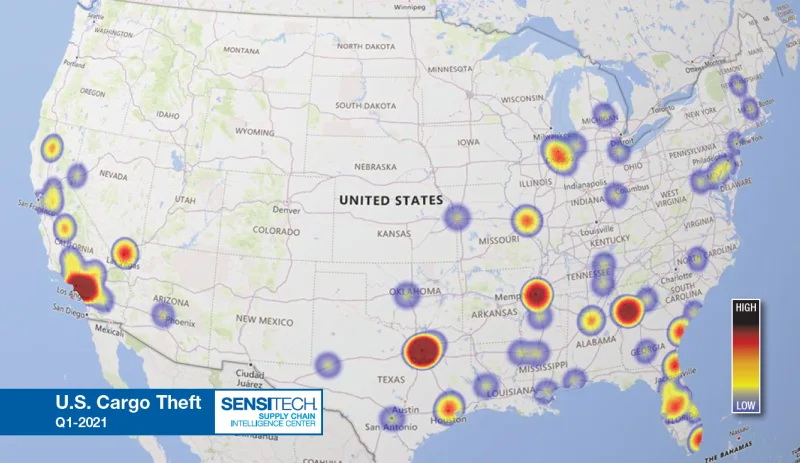Informed drivers take bite out of cargo crime: Driver’s Education
A truck driver’s day is fraught with stuff to worry about. Cargo theft probably isn’t near the top of the list. Most drivers are aware that loads get swiped all the time, and while they probably don’t want to be the driver who has to make that call to dispatch, few really give the prospect a second thought.
Statistically, cargo theft is also fairly rare. Compared to the thousands of trailer movements that arrive safely at their destinations every week, only handful of loads might actually be stolen. Taking all those precautions seems like a lot of extra work to prevent something that’s less likely to happen than a front-tire blowout.

“If your home has never been burglarized, the last thing you think about every day is your home being burglarized — until it’s burglarized,” says Scott Cornell, national practice leader – transportation, with Travelers’ inland marine division. “The same thing goes for cargo theft. If you haven’t experienced cargo theft, or you haven’t dealt with it at some point, it’s kind of out of sight out of mind. It’s not something you think is going to happen to you.”
Drivers’ exposure to the possibility of theft depends a lot on what’s in the cargo box.
“Cargo thieves will always steal what they know they can sell,” Cornell says.
Certain products are always in demand. Criminals often have standing orders for certain commodities, and the goods are pre-sold before they are even stolen. Buyers are standing by with space in warehouses ready to quickly unload, hide, and then distribute the stolen goods. The faster they can move it through their supply chains, the less likely they’ll be caught red handed with stolen merchandise.

Hot commodities
Almost any consumer product you can imagine has some value to cargo thieves. They will steal anything they can resell and is not easily traced through serial numbers, batch numbers, and lot numbers. Most stolen merchandise winds up at flea markets, farmers markets, corner stores, or restaurants. Basically, anywhere the evidence can be eaten or carried home by an unsuspecting shopper with an eye for a bargain.
CargoNet, an information-sharing system created by the National Insurance Crime Bureau (NICB), reports quarterly on the most frequently stolen loads, where they were stolen, and the value of goods reported stolen by carriers. For the past several years, household goods (such as clothing, toys, cleaning products), food and beverages, and electronics have been the most frequently stolen loads.
Since CargoNet began tracking cargo theft in 2009, data suggests hot commodities can be predicted by observing economic and societal trends. For example, back in 2010, when the economy was in the tank, food products were the most commonly stolen load. “People had to eat,” Cornell notes.
“Fast forward to 2020, with the pandemic, we saw a big increase in the number of loads of home improvement products, building materials, etcetera. Remember what happened to the price of lumber last year? If you think about it, people spent more time at home, they were rebuilding and redecorating, building home offices …. Those loads proved to be lucrative targets for cargo thieves.”
What does that mean for drivers? Trailers containing any of the hot commodities or material that could be deemed in demand are more likely to be targeted than loads of auto parts, for example, or raw materials for industrial production. In short, any untraceable commodity that can be wholesaled to an unscrupulous buyer and then resold directly to consumers is a potential target.
For example, Ontario Provincial Police reported that someone drove away with about $100,000 in chocolate candies that had been sitting unattended at a business over one weekend in October. Through their networks, the criminals will get these products onto store shelves or into markets where consumers happily load their carts with slightly discounted merchandise and never give the source of the product a second thought.
Naturally, there are exceptions to the rule. At about the same time the chocolate disappeared, a load containing 11 pieces of lifting equipment was picked up directly from a shipper in southern Ontario — using suspected fraudulent documentation. Such commodities, along with high-end autos and machinery, are often shipped overseas to foreign buyers using bogus documentation.

Theft prevention tips
Short of heroics, which are highly discouraged, there are things drivers can do to keep the crooks from snagging a load. These are mostly commonsense strategies coupled with awareness of the risks and the likelihood of the threat.
“Truckstops and parking lots are by some margin the most common location for thefts to occur,” says Cornell. “By parking lots, I mean lots other than truckstops, which may be dirt lots, areas near distribution centers, rest areas, and even freeway on- and off ramps. With the current parking shortage, we are seeing more thefts occur at areas other than truckstops because they are unsecure and unsupervised.”
It is reported that thieves will often grab a truck while the driver is inside paying after fueling, because such trucks are often left unlock and sometimes running. Those trucks are easy targets. In fact, any idling, unlocked truck is easy pickins. Never exit the vehicle with the keys in the ignition or without locking the doors. Duh.
Pilferage is also a problem with trucks sitting in parking lots. It’s more of a crime of opportunity and more likely perpetrated by local hoods rather than organized criminals. They will look for unlocked trailer doors, open them, peek inside, and grab what they can if there’s something of value within easy reach.
Cornell says this type of theft is seldom reported and very difficult to trace because nobody can be sure where or when the theft occurred.
Locked doors and secure seals can help. They will, at least, slow the crooks down and maybe discourage them all together. Rather than causing a scene when trying to bust open a lock (or multiple locks), they’ll move on to the next unlocked trailer.
Drivers should also avoid stopping in what could be considered a “red zone.” Cargo theft experts say thieves often tail loads after they are picked up, and wait for an opportunity to move in and grab them. Statistically, more of these heists happen with 200-250 miles (300-400 km) of the point of origin, so drivers are advised to avoid stopping if possible until they are outside this critical area.
“Thieves will sit outside a distribution facility and watch the loads coming out,” Cornell says. “They’ll tail the truck hoping the drivers stops for fuel, a shower, or a meal, or something that will give them an opportunity not far from the distribution center to target that load. They’re very organized in their techniques. They know what they’re doing.”
As far as preventive measures go, there are loads of theft-deterrent devices on the market, which hopefully fleets will help to procure. For owner-operators, anything that will deter or even slow a thief is probably a good investment: king-pin locks and brake valve locks are useful deterrents.
Even some DIY strategies can help, such as installing a battery disconnect switch, airline shut-off valves, or even removing the glad hand connectors or landing gear crank handles from the trailer. Anything that will keep the truck where you left it or draw attention to the guy trying to steal it is worth considering.
And last but not least, take photos of the truck and trailer, including the unit numbers and license plate numbers before the trip. If your truck does disappear, you’ll be able to provide police with photos of the stolen vehicle. Simply saying the truck is a red Freightliner Cascadia pulling a Great Dane reefer isn’t very helpful.
Cargo theft is big business for the bad guys. Proceeds from cargo theft are often used as seed money for more sinister crimes, says Todd Moore, vice-president of cargo theft and specialty risk with ISB Global Services. For example, a $105,000 stolen load can buy 10 kilos of cocaine in the Dominican Republic, which arrives in Toronto with a street value of $750,000 – about a 500% return after expenses.
Those rates of return help explain thieves’ determination. Drivers can help reduce the thefts by being mindful of the types of loads likely to be stolen and being careful not to provide the crooks with the opportunity to make an easy getaway.
Have your say
This is a moderated forum. Comments will no longer be published unless they are accompanied by a first and last name and a verifiable email address. (Today's Trucking will not publish or share the email address.) Profane language and content deemed to be libelous, racist, or threatening in nature will not be published under any circumstances.
Everything has a value and can be resold.
I never discuss with anyone what I am carrying on my truck and if it’s not a sealed load, I will put my own seal on so I know if it has been tampered with on the way. A few boxes from your load will put some money into another’s pocket.